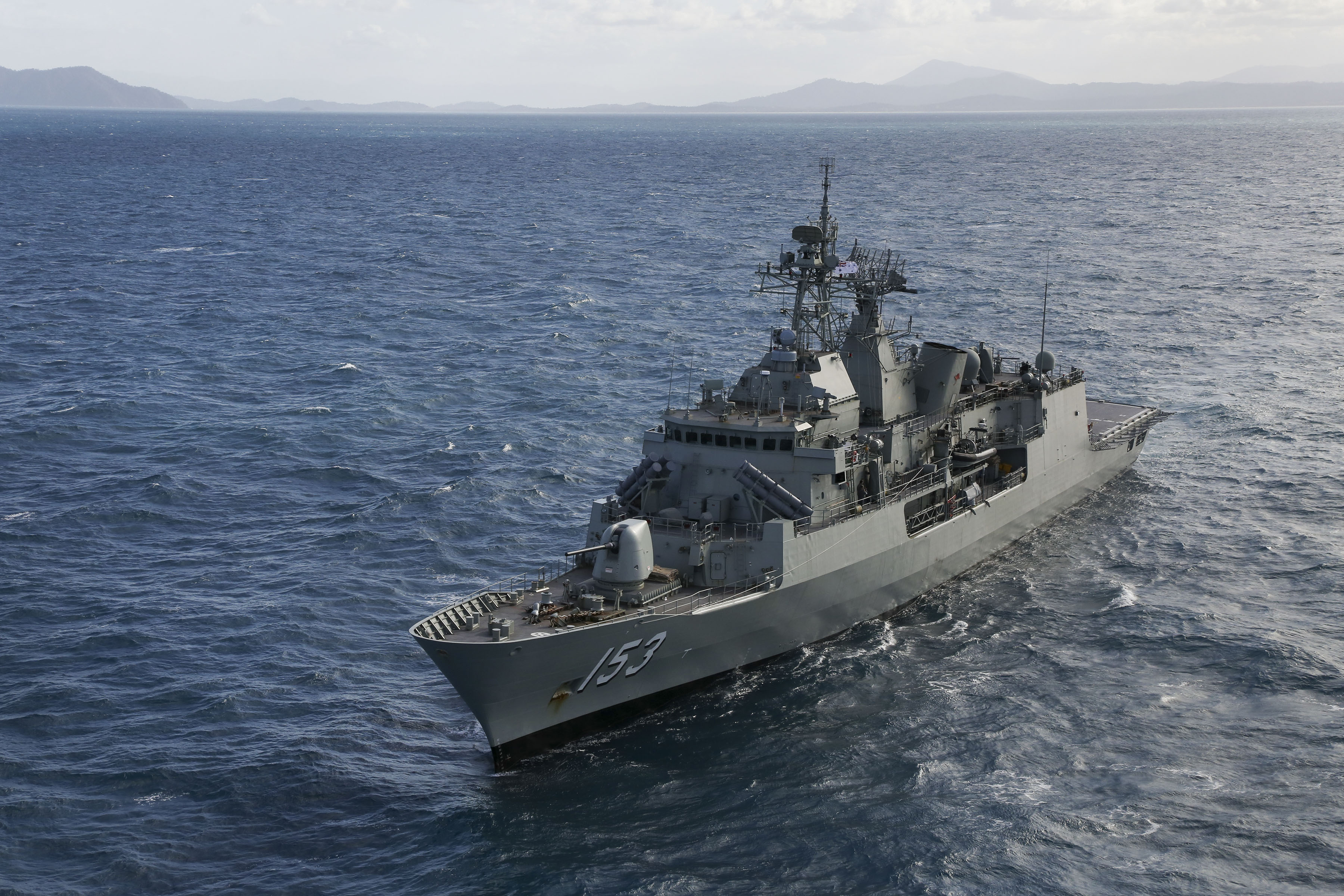We're using highly sensitive superconductors to develop mini antennas for the Royal Australian Navy.
We’re looking to replace the large antennas, like you see here on the HMAS Stuart, with something smaller – around the size of Coca Cola can. Image credit: Commonwealth of Australia, Department of Defence
Everybody knows that good things come in small packages. That might help explain our fascination/obsession with pint-sized versions of things: tiny baby clothes, kittens, teacup pigs, mini burgers… The list goes on.
But compact things aren’t always cute and can have other merits. Like, say if you need to be stealthy to avoid being spotted by opponents out at sea.
That’s one of the reasons why we’ve been awarded funding through the Australian Department of Defence’s Concept Technology Demonstrator (CTD) program, to develop mini antennas for the Royal Australian Navy.
At the moment Navy ships require dozens of large and heavy antennas to detect signals, each spaced metres apart from one another around the ship.
We’re looking to replace these with a small number of radio frequency antennas that are much more sensitive, lightweight, low-noise and as small as a Coca Cola can. The new technology aims to give the Navy greater stealth, safety, new functionality and cost savings.
By applying this technology, we will increase antenna receiver sensitivity to a level approaching the quantum limit while increasing the bandwidth at the same time.
It has the potential to replace many conventional antennas used to date and could also be suitable for unmanned aerial vehicles (or drones).
The project was announced by the Australian Department of Defence as the flagship project, securing the largest proportion of funding through the latest round in the CTD program. The program supports projects that have the potential to enhance the nation’s defence capabilities.
Superconductivity is a versatile technology and we’re applying it to a range of challenges from mineral ore discovery, to making telecommunications more efficient and detecting dangerous substances and contraband using terahertz (THz) imaging.
Find out more about our work with Defence.



6th November 2015 at 9:09 am
The correlation between square wave and saw tooth wave generation have an interaction at non matching frequencies in between their generation allowing greater transmittion voltage jump as per ignition coil allowing a complementry jump into the stratosphere EG lightning counterpart..
It is not so much the reduction of antenna size ,but keeping the confidentiality of the transmission secret although on wide broadcast, the combination of changing frequencies inside a set frequency ,without cancelling original signal,would allow one set size aerial to cover a greater range, also a faux aerial could be transmitting what would be relevant information at the same time, with true information being background static
5th November 2015 at 5:48 pm
While you are about making Navy antennas smaller, have a look at the STRAIGHT thin ones used by the Army, they really stand out, straight lines dont fit in with nature
9th November 2015 at 2:55 pm
Hi Kenneth, thank you for your recommendations. We are indeed investigating options for the army as well.
Nick
CSIRO social media team
5th November 2015 at 5:21 pm
Can local companies assist you with products & concepts?
9th November 2015 at 2:54 pm
Hi Marc
Local companies are more than welcome to assist. At this stage we expect this to involve early conversations about future needs.
Thanks
Nick
CSIRO social media team
26th October 2015 at 8:05 am
So which department in CSIRO is leading up this research?
26th October 2015 at 8:39 am
The Manufacturing team will be heading up this research Grant.
Regards,
Adam